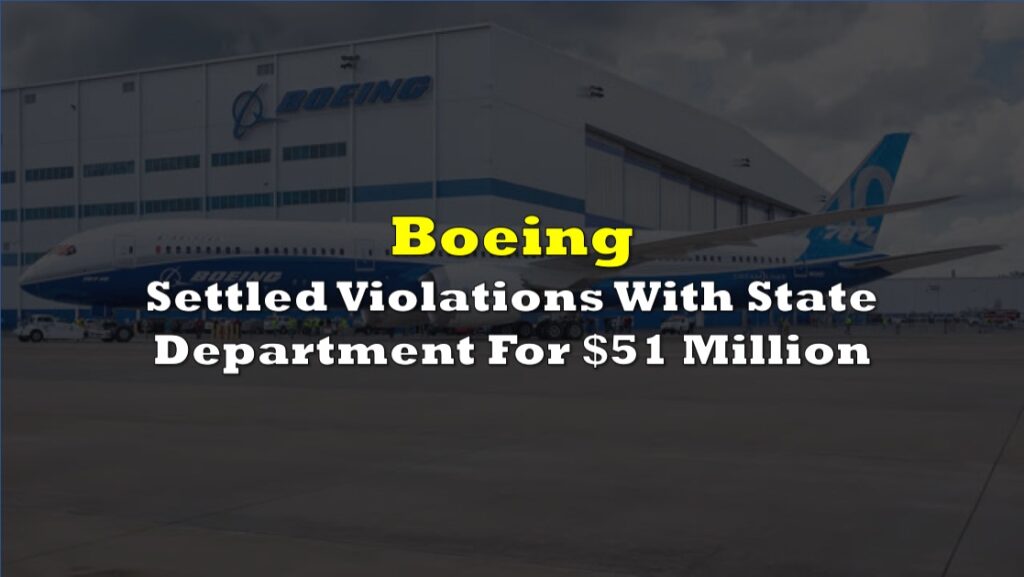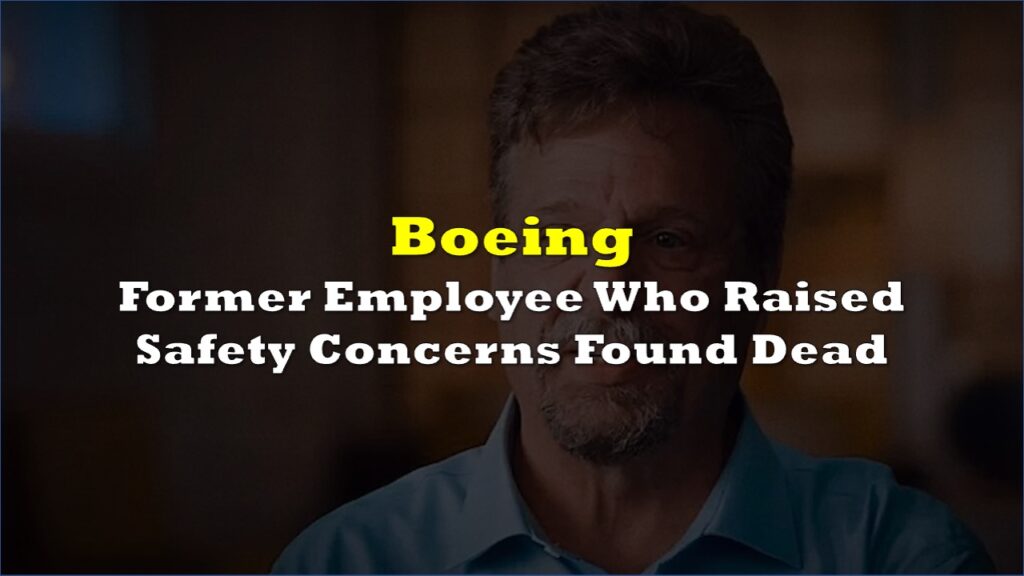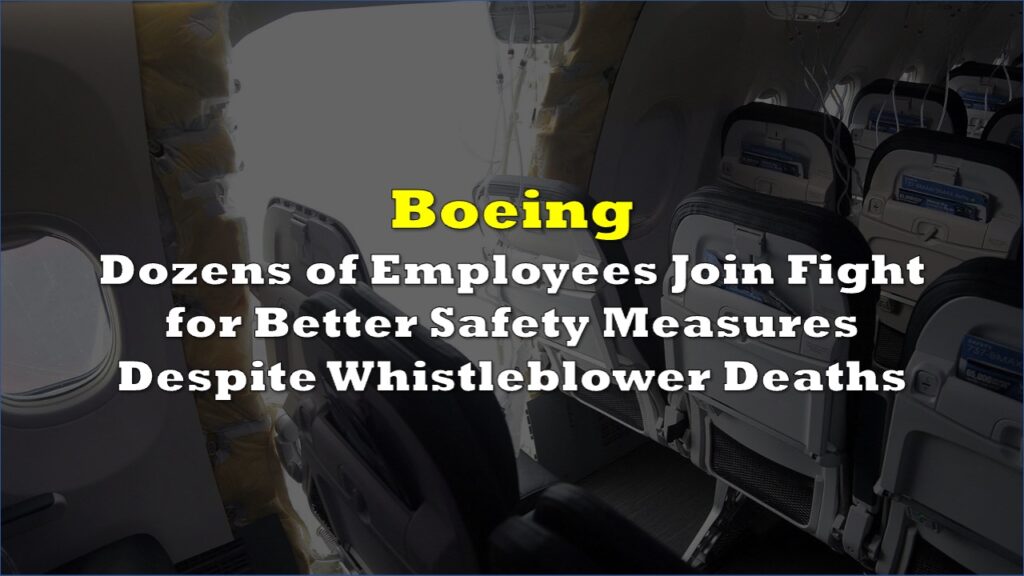Kevin Clarke was aboard United Flight 354 when he witnessed a Boeing (NYSE: BA) 757-200’s wing falling apart during the flight. Clarke, equipped with his cell phone, captured the unnerving incident as the plane executed an emergency landing in Denver.
The flight, en route to Boston from San Francisco, faced a critical situation necessitating an unexpected diversion to Denver. The cause was identified as a slat issue on the wing, prompting swift action from the flight crew to ensure passenger safety.
A United flight from San Francisco to Boston had to be diverted to Denver after it was discovered mid-air a portion of the wing was damaged. Passenger Kevin Clarke took this video. What he says he saw before getting on the plane on @boston25 this morning. pic.twitter.com/0GIaOmS46t
— Kelly Sullivan (@ksullivannews) February 20, 2024
Despite the alarming turn of events, all 164 passengers aboard the flight were successfully transferred to a replacement aircraft to resume their journey to Boston. However, the diversion led to a delay of approximately three hours, affecting the passengers’ schedules.
Clarke, relieved by the safe landing at Logan Airport, expressed gratitude for the crew’s professionalism amid the crisis. He noted observing potential evidence of bird strikes on the planes prior to boarding in San Francisco.
“We take off, I heard this loud buzzing noise, and then it faded away so I didn’t think much of it and all of a sudden the pilot is coming back, so I threw my window open, peeked out the window and the whole leading edge of the wing was destroyed,” Clarke said.
A United Airlines spokesperson confirmed the diversion, emphasizing the priority placed on passenger safety throughout the ordeal.
Safety issues on 737
The Clarke incident is just a part of a larger problem Boeing finds itself in recently, as the aircraft manufacturer is under intensified scrutiny as safety and quality control issues plague its flagship 737 MAX jetliners. Recent incidents have raised alarms, casting a shadow over the aircraft’s reputation for reliability.
One such incident involved a door panel detachment on an Alaska Airlines 737 MAX 9 shortly after takeoff, prompting the Federal Aviation Authority (FAA) to ground all 737 MAX 9 planes for inspections and necessary repairs. The National Transportation Safety Board’s (NTSB) preliminary report revealed missing bolts on the door panel’s frame, a critical oversight that emerged after repairs were conducted.
Adding to Boeing’s challenges, another plane, a 737-800, encountered issues in Japan when crew members discovered a crack in the cockpit window mid-flight. The All Nippon Airways flight was compelled to return to the Sapporo-New Chitose airport. Fortunately, the crack did not compromise flight control or pressurization systems, averting a potentially dire situation.
READ: Boeing Has A MAX 9 Problem: United and Alaska Report Loose Bolts
Although the Japanese incident did not involve a Boeing 737 MAX 9, it nonetheless contributes to the prevailing concerns about Boeing’s aircraft safety. The specter of two deadly crashes involving the previous version of the 737 MAX continues to loom large, exacerbating apprehensions among passengers and industry stakeholders.
Amid these incidents, ongoing worries persist regarding Boeing’s manufacturing processes, with previous warnings about outsourcing parts casting a shadow over the company’s operations.
Further exacerbating concerns are reports of improperly drilled holes on window frames and missing bolts in rudder control systems, underscoring deeper systemic issues within Boeing’s manufacturing processes.
These incidents come in the wake of previous fatal crashes involving the 737 MAX in Indonesia and Ethiopia, resulting in a two-year grounding for fixes to the MCAS flight control software systems.
READ: FAA To Investigate Boeing Manufacturing Processes Following Fuselage Blowout
Acknowledging these safety concerns, Boeing has announced new inspections and measures aimed at bolstering quality control and restoring confidence in its aircraft.
However, a former Boeing senior manager has shed light on the immense pressures faced by manufacturing employees and voiced concerns about the prevailing corporate culture, hinting at underlying challenges that need to be addressed.
Aviation experts have echoed these concerns, emphasizing the need for modernization and improved safety protocols amidst the surging demand for air travel. While the flying public is assured of rigorous scrutiny on 737 MAX planes, the broader systemic issues within Boeing’s operations continue to cast a shadow over the aviation industry’s safety standards.
Boeing deployment issues
On top of reported accidents with its deployed models, the aerospace giant has also disclosed a potential delay in the near-term deliveries of approximately 50 aircraft owing to a problem detected in the Boeing 737 fuselages. The issue, brought to light by a worker at one of Boeing’s suppliers, revolves around two holes on the fuselage that were not drilled to company specifications.
Stan Deal, the CEO of Boeing, confirmed the potential delays in deliveries, stating that inspections and possible rework would be conducted to address the problem. Several days are allocated for the 737 program at the Renton, Washington, factory to concentrate on ensuring quality.
Despite the setback, Deal emphasized that the identified issue does not pose an immediate flight safety concern.
The NTSB is actively conducting an investigation into the incident, while the FAA is closely examining Boeing’s adherence to safety regulations and scrutinizing the practices of its suppliers.
Information for this story was found via the Fox Business, PBS, The Hill, The Byte, and the sources and companies mentioned. The author has no securities or affiliations related to the organizations discussed. Not a recommendation to buy or sell. Always do additional research and consult a professional before purchasing a security. The author holds no licenses.









